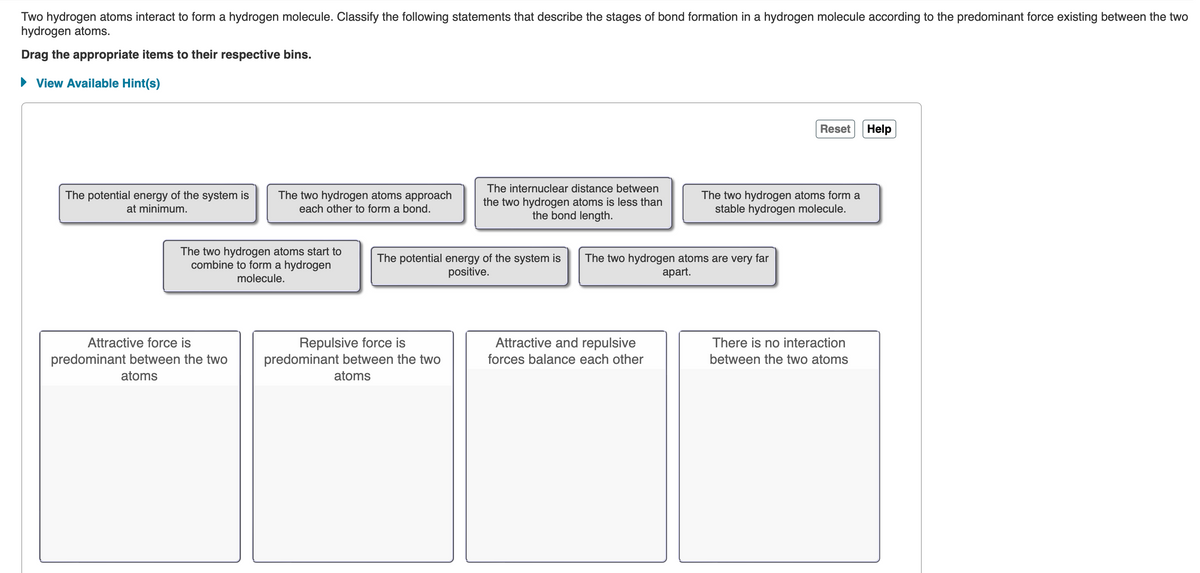Two hydrogen atoms interact to form a hydrogen molecule. Classify the following statements that describe the stages of bond formation in a hydrogen molecule according to the predominant force existing between the two hydrogen atoms. Drag the appropriate items to their respective bins. ► View Available Hint(s) The potential energy of the system is at minimum. The two hydrogen atoms approach each other to form a bond. The two hydrogen atoms start to combine to form a hydrogen molecule. Attractive force is predominant between the two atoms The internuclear distance between the two hydrogen atoms is less than the bond length. Repulsive force is predominant between the two atoms The potential energy of the system is The two hydrogen atoms are very far positive. apart. Attractive and repulsive forces balance each other Reset Help The two hydrogen atoms form a stable hydrogen molecule. There is no interaction. between the two atoms
Thermochemistry
Thermochemistry can be considered as a branch of thermodynamics that deals with the connections between warmth, work, and various types of energy, formed because of different synthetic and actual cycles. Thermochemistry describes the energy changes that occur as a result of reactions or chemical changes in a substance.
Exergonic Reaction
The term exergonic is derived from the Greek word in which ‘ergon’ means work and exergonic means ‘work outside’. Exergonic reactions releases work energy. Exergonic reactions are different from exothermic reactions, the one that releases only heat energy during the course of the reaction. So, exothermic reaction is one type of exergonic reaction. Exergonic reaction releases work energy in different forms like heat, light or sound. For example, a glow stick releases light making that an exergonic reaction and not an exothermic reaction since no heat is released. Even endothermic reactions at very high temperature are exergonic.

Trending now
This is a popular solution!
Step by step
Solved in 2 steps









